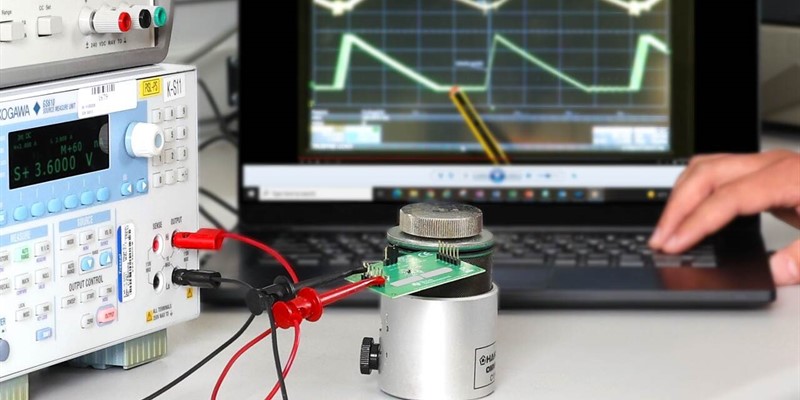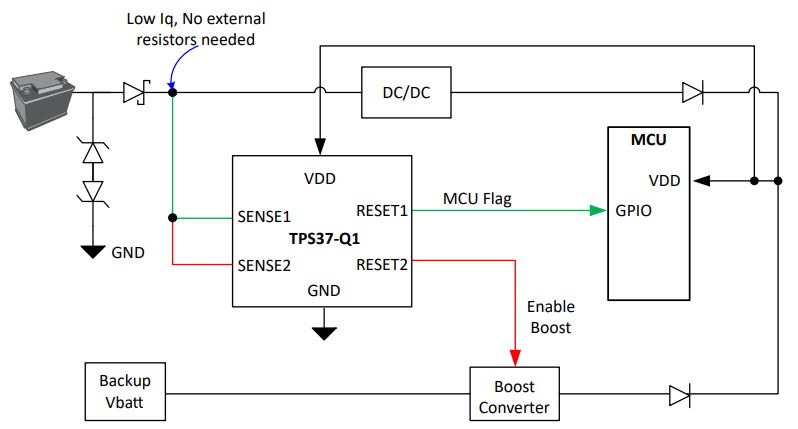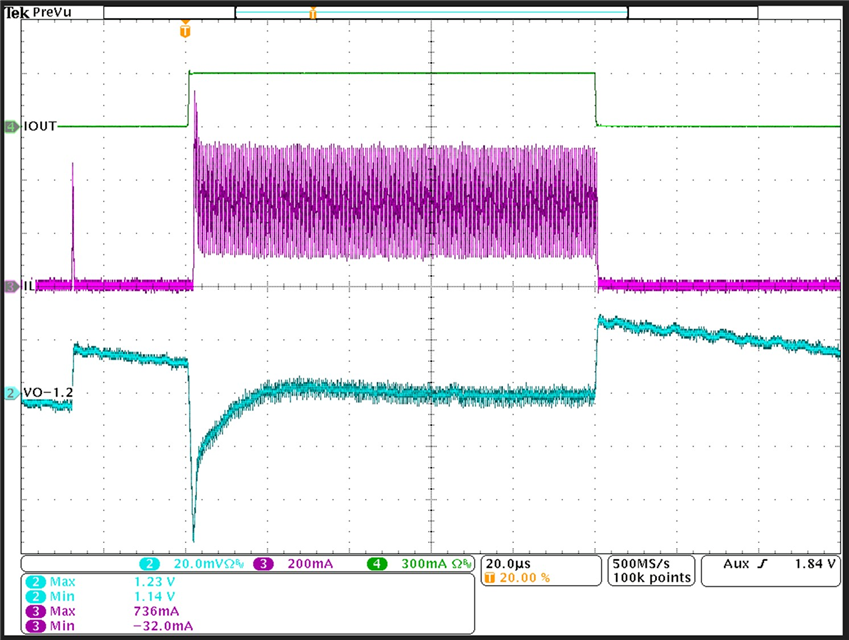SSZTD08 November 2023 BQ25125 , BQ25155 , TPS37-Q1 , TPS62843 , TPS7A02

With the world more battery-powered than ever, the demand for better and cheaper batteries and battery packs is soaring. And while battery manufacturers are introducing new chemistries and smaller packs, which are putting new and complex constraints on power requirements, the fundamental functionality remains the same: today’s batteries must have a maximized run time and an extended shelf life without compromising system performance.
Minimizing quiescent current (IQ) is a priority when reducing power consumption, which in turn extends battery life. A device’s IQ is simply the current drawn, or power consumed, from the battery while in standby mode or light-load operation. IQ can significantly impact device efficiency, and in battery-powered applications, achieving high efficiency at no- or light-load conditions requires power-management solutions that tightly regulate the output while maintaining ultra-low supply current.
Many of today’s designs require mere nanoamperes of IQ, a feature that’s important for applications ranging from electric vehicles (EVs) all the way down to power tools, headsets, headphones and earbuds that require long standby operation. And because these types of systems spend more than 99% of their time in standby mode, the IQ in standby, or sleep, mode can be a limiting factor for battery life.
Optimizing power-management building blocks such as DC/DC converters, low-dropout regulators (LDOs), power switches, voltage references and supervisors, and battery-management devices can help enable low power consumption and extend battery life.
Here are the top three ways our low-IQ technologies can extend battery and shelf life without compromising performance.
Enabling low, always-on power
Ultra-low-leakage process technologies and novel control topologies enable long battery run times. Achieving ultra-low IQ when the system has gone into standby mode extends battery run time.
In Figure 1, the TPS37-Q1 supervisor achieves an IQ for EV battery monitoring at a typical 1 µA while still supporting up to 65-V supply voltages all without compromising on area or response time.
 Figure 1 Direct 12-V/48-V off-battery
voltage monitoring with
TPS37-Q1
Figure 1 Direct 12-V/48-V off-battery
voltage monitoring with
TPS37-Q1
Battery-charger integrated circuits (ICs) such as the BQ25155 with an IQ of 10 nA in ship mode can help ensure that the battery does not get depleted, even when sitting for months or years on a shelf. Low-power regulators such as the TPS7A02 offer an ultra-low IQ of 25 nA and a ship mode with an IQ of 3 nA, helping increase battery life dramatically in normal and dropout operation.
Achieving fast response times
Fast wake-up comparators and zero-IQ feedback control enable fast dynamic responses without compromising low power consumption. Intelligent biasing schemes that instantaneously accelerate the comparator when there is an error detected improve speed without additional IQ. For example, in Figure 2, the TPS62843, a buck switching regulator with a typical 275-nA IQ, demonstrates a more than three times improvement in response time × IQ/ILOAD over previous generations. Additionally, the TPS37-Q1 has one of the best response and detection times in the industry (8 µs typically), which is at least two to 10 times faster compared to industry alternatives.
 Figure 2 The
TPS62843
load transient at 1.2 VOUT, IOUT_MIN = 0 A to
IOUT_MAX = 300 mA
Figure 2 The
TPS62843
load transient at 1.2 VOUT, IOUT_MIN = 0 A to
IOUT_MAX = 300 mAReducing form factor
Area reduction techniques for resistors and capacitors facilitate integration into space-constrained applications while not affecting quiescent power. The next-generation nanopower devices eliminate the need for a majority of the external pullup and pulldown resistors and external resistor-divider networks, and offer much smaller form factors such as the TPS7A02 at a 640-µm-by-64-µm chip-scale package size.
Another way to save board area is to integrate more functions onto a single die. This integration enables blocks such as the supervisor, reference system, low-dropout regulator, battery charger and DC/DC converter to share common building blocks while reducing the combined IQ. The BQ25125, a battery-charger management IC available in a 2.5-mm-by-2.5-mm wafer chip-scale package, integrates and flexibly controls multiple low-IQ functions with I2C, which enables designers to bring an entire power-management system to multiple low-power applications.
Conclusion
With battery-powered applications becoming more ubiquitous, the increased demand for low IQ without compromising system performance can be daunting. But it doesn’t have to be. At TI, our portfolio of ultra-low IQ technologies can help you achieve ultra-low power without trade-offs in performance and costs to maximize battery run time and extend shelf life in your next battery-powered designs.
Additional resources
- Read our white paper, “Overcoming Low-IQ Challenges in Low-Power Applications.”
- Watch our training series, “How to Extend Battery Life with Low-IQ Technologies.”
- Explore our latest reference design, “Backup Battery Reference Design with Preboost, Charger and 1S Li-ion Fuel Gauge.”